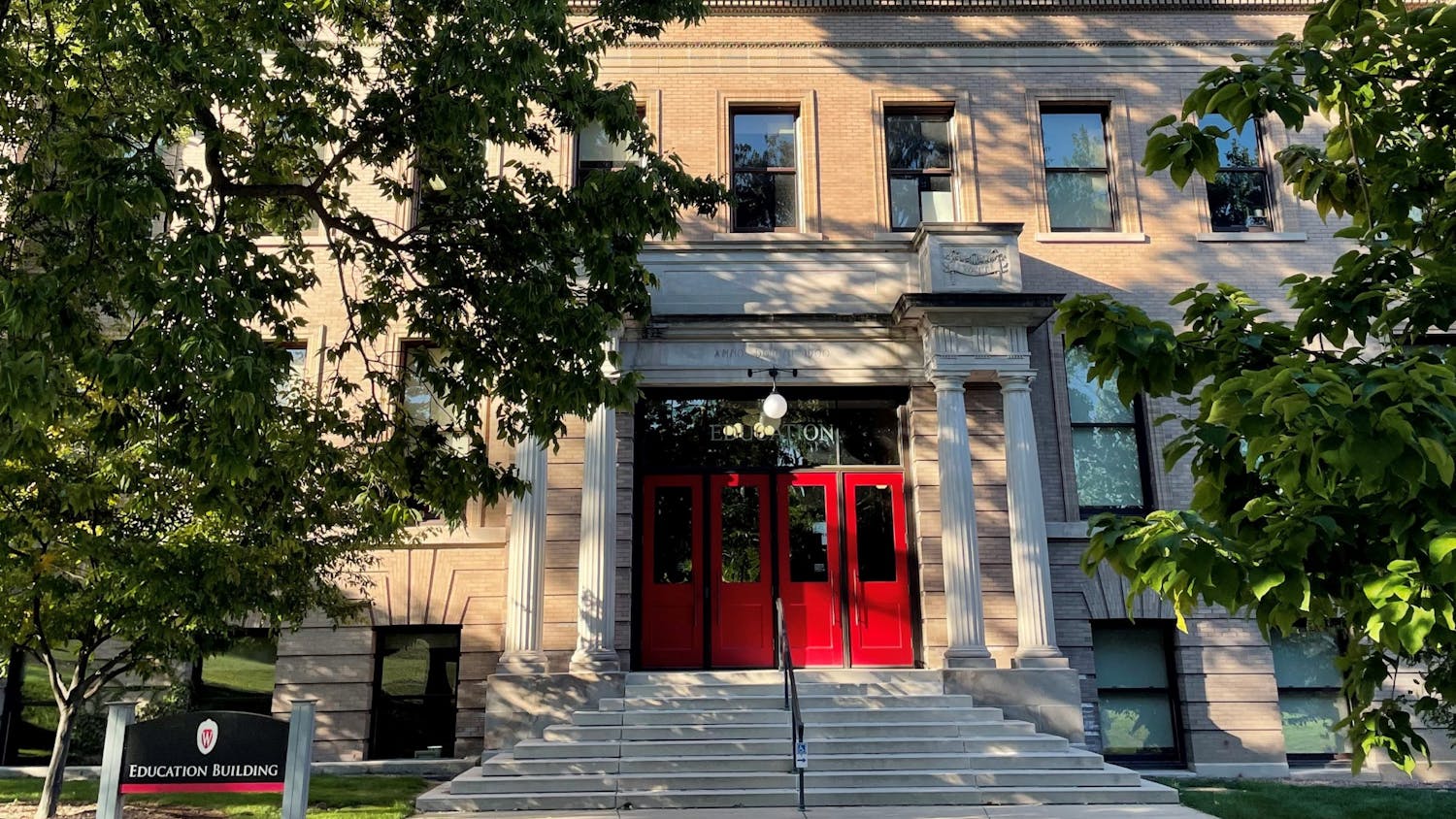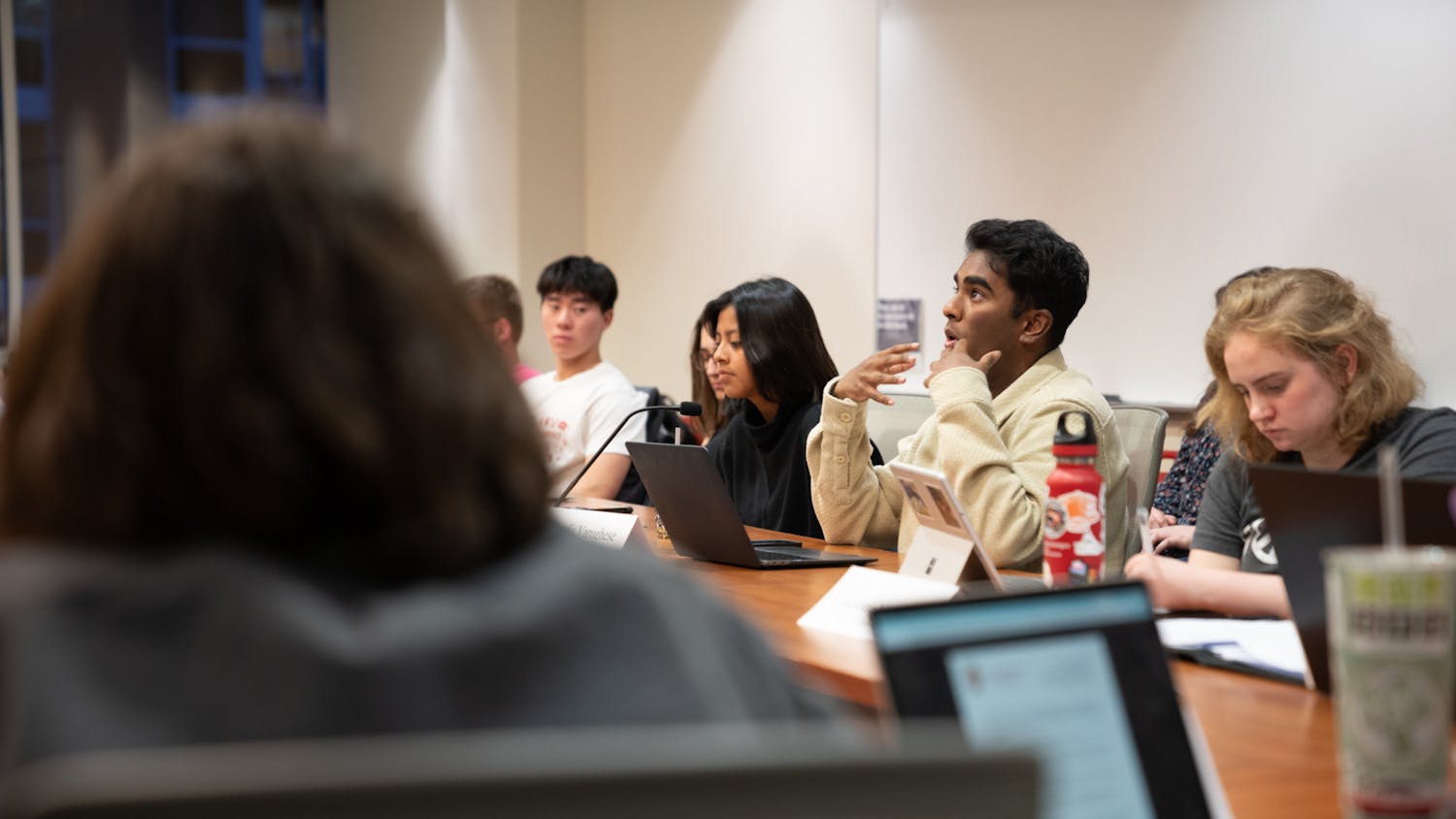When you walk into the School of Human Ecology's Ruth Davis Design Gallery from now until March 9, you'll be greeted with materials of all kinds — cascading, thread art installations, glass sculptures, funky chairs and more — each demonstrating how humans shape our world through materials.
The “Material Intelligence” exhibit, free to the public, is a culmination of materials that we use as humans, innovators and adaptors that shape our physical surroundings, inspired by the Material Intelligence online publication.
This exhibit in particular, explores two materials: glass in a research, educational and museum-style display as well as threads in a more gallery-style manner.
“Materials can help us think about an artist's practice and vision, materials can help us think about glass as a research material — the ‘Material Intelligence’ idea can contain all of those, and we wanted to show that both through the work we display and how we display that work,” said Sarah Ann Carter, material intelligence curator and executive director of the Center for Design and Material Culture.
On the left side of the exhibit, “Threads: Natural Fibers and Living Lines,” a linen and fiber display, showcases the work of Ann Coddington, fiber artist and professor emeritus from Eastern Illinois University. Coddington devotes a lot of her time to her studio practice, teaching and creating designs that practices up to hundred-of-thousands of years old.
“It’s really interesting to be engaging in a practice with such an ancient history in this current, sort of modern, digital age and extend that practice into the future,” Coddington told The Daily Cardinal.
Coddington's art presents in dynamic ways, embodying movement and sculptures that emerge from natural fibers. Her portion of the exhibit is more gallery-style, the artwork is spread out between groups of objects so that you can look at her work as their own, individual pieces of art, according to Carter.
“Ann Coddington's beautiful, poetic and evocative work in ‘Threads’ helps us think about another kind of material, in this case linen, which can be transformed into the different kinds of sculptures of work in a totally different way,” Carter said.
Net-like figures hang from the ceiling, and the threaded designs come in a range of sizes and styles. Some have large gaps in between, like a group of hanging nets, and some are tightly threaded sculptures. Coddington's "Little Arm” sculpture explores her relationship with her daughter and the feeling of being far apart. Paying homage to the title of the exhibit, Coddington has created a piece called "Work in Progress,” which she will continue to work on throughout its duration.
"I think it’s nice for the viewer to be able to see the construction of it,” Coddington said. “That technique is called twining; it’s an off-loom weaving process. We usually think of weaving like a loom, and it’s very similar to that except it’s not loom-based.”
Coddington will teach this technique at an upcoming workshop.
On the right side of the exhibit, glass adorns the “Spheres of Influence” portion, which explores how glassmakers, glass inventions and glassblowers have impacted the University of Wisconsin-Madison’s education and life.
There's a captivating spread of sculptural invertebrates from the 1800s, fashioned by a German father-and-son duo Leopold and Rudolph Blaschka, who developed the Blaschka models. The sculptures were recreated by professional glass blowers and are on loan from the UW-Madison Zoological Museum. There’s also stones from UW-Madison’s Geology Museum and lantern teaching slides from UW-Madison's Astronomy department.
In the back of the exhibit sits a Work in Progress Lab, where viewers can find directions for starting projects like crochet, mending, felting and beyond.
"We're thinking hard about how we can slow down visitors experiences in a gallery — creating an experience where people want to come in, look around, maybe learn something, maybe look around, maybe get excited and then be incited to sit down, maybe connect with people and think about objects in the world around us,” Carter said.
The “Material Intelligence” exhibit is supported by the Chipstone Foundation, the Anonymous Fund, The UW-Madison School of Education Impact 2030 Helen Burish Fund, the UW-Madison Office of the Vice Chancellor for Research with funding from the Wisconsin Alumni Research Foundation and the Marilynn R. Baxter Fund.






